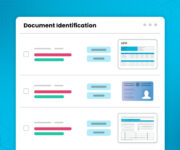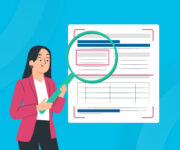In a world of biometrics, smart cards and digital security, is identity theft a setback? Lost passport, Online Shopping Fraud, Debit Card Theft, sound familiar, doesn’t it? With the onset of the digital paradigm, is technology holding us back or taking us forward? This is a question that has left all of us bewildered, for it is difficult to comprehend this vicious circle.
Whilst fraudsters now can commit identity theft and create forged documents through technology, technology has also become a way out of this world of imposters.
Identity Theft in a Nutshell
As cybercrime cases increase, our personal data and information seem jeopardized. With identity theft, the information isn’t “personal” anymore. What is privacy with identity theft and doxing?
To start with, identity theft is when someone steals an individual’s personal details for illegal purposes. This can be devastating for companies as well as the customers. Breaching someone’s identity and privacy is ethically and morally wrong and would mean losing the customer’s trust in the company.
You might have come across the recent Zoom incident wherein around 500,000 zoom accounts were being sold online. Although these incidents decrease the credibility of a company, most of the time the company is not even at fault. As a result, the cost is paid by the company as well as the customers.
2021 Norton Cyber Safety Insights Report says that as per the survey, out of 1000 Indian respondents, 36% of them have experienced identity theft.
One Step Ahead towards Detecting Fraud
The best solution is prevention. How can we detect forged documents?
A customer, employer, or employee must be aware of fraudsters and imposters. Technology can turn things around, read further to know more about the 7 types of document and identity fraud, and how to detect them?
Modified Documents
As the name suggests, in these documents modification is carried out in the original document. Further classification comes in two forms:
- Forged Documents– In this, information is changed partially or completely resulting in modification of the identity. Fraudsters could change certain information, remove some information, add real pages from another document, apply fake stamps or digitally add information to an original document.
- Blank Stolen Documents– Fraudsters may leak the blank documents that are in the process of being original. After this, they fill in the false information.
Detection Method: Data Integrity Analytics
- Check if the data is consistent and make sure that all the valid information is present in the necessary areas.
- Few documents have specific data logic standards, check if the algorithm rules are being followed.
- Ensure that any hidden chip information aligns with relevant databases.
Illegitimate Documents
Here, the fraudster is bold enough to create the entire document falsely. Further classification comes in three forms:
- Counterfeit Documents: These are emulations of an original document. In this, the fraudster gets a template and inputs fake information. Counterfeit documents are easily available illegally and are sold for a high price.
- Compromised or Sample Documents: You might have come across documents that are available to the public, or government-issued samples? Any document that is reported as stolen to the police or document shared on the web belongs to this category.
- Fantasy or Camouflage Documents: An unsophisticated type of fraud, Camouflaged documents have names written by issuing authorities that either does not exist or aren’t allowed to issue documents.
Detection Method: Visual Document Authenticity
- Look for minute differences in the ID.
- Compare it with the official templates and look for differences.
- You can check for modified digital ID photos, tampered pixels, font irregularity.
- Check watermarks, barcodes, and embossed text.
- If you find something anomalous, then those are illegitimate documents.
Falsely Represented Documents
Falsely Represented Documents do not belong to the person who is presenting them to you, however, the document is genuine. This is rather difficult to detect without sophisticated identity verification technology. Further classification comes in two forms:
- Fraudulently Obtained Documents: In this case, fraudsters use someone else’s photo or apply with a fake document, or use fake personal details. They are issued an original document with fake information.
- Imposter Documents: In this, the fraudster acts as an imposter and uses an authentic document of someone else’s and presents it to the authorities as their own.
Detection Method: Proof-of-ownership Verification
- Compare the digital image of the imposter with the image used in the ID.
- Live video verification can be done.
Learning about Fraud Sophistication
As we move ahead, along the way of combating fraud comes fraud sophistication. It is important to know the degree of sophistication that a business might have to face with identity theft.
Let us understand this via 4 tiers.
Tier 1– As the most sophisticated fraud, these documents include stolen blank documents, genuine documents that are obtained fraudulently, or sophisticated counterfeits. These are created via attacks on the supply chain of document issuers and manufacturers and are sold on the black market for hefty money. Since these documents can easily fool any expert or machine, one way to combat this fraud is by analyzing all the documents clearly, along with database and biometrics.
Tier 2– This includes forgeries and counterfeits. The document under this category seems correct and logically real. This can be detected by trained experts or highly advanced technology via detecting differences in fonts, layout, and other features.
Tier 3– Altered document templates and poorly manufactured documents fall into this category. By figuring out number formats and data inconsistencies, these documents can be detected.
Tier 4– A fraudster in this category is at their amateur stage. Fantasy and Camouflage documents fall into this category and can be easily identified.
No more Imposters!
Where privacy and risk are involved, things can be daunting. With the right computerized software and identification technology, detecting and combating identity theft and any type of document fraudulency can be made easier.
To make customers’ experiences smooth and companies’ reputations healthy, cyberspace must be safe.




Leave a Reply